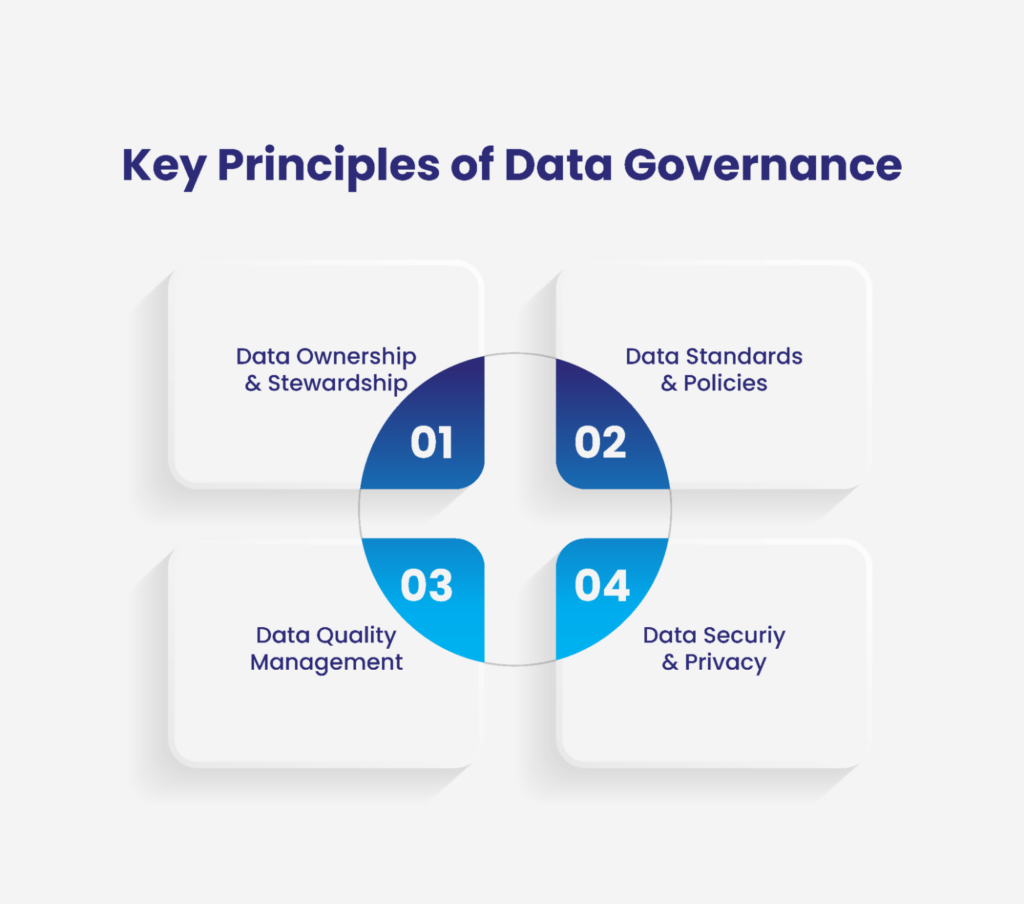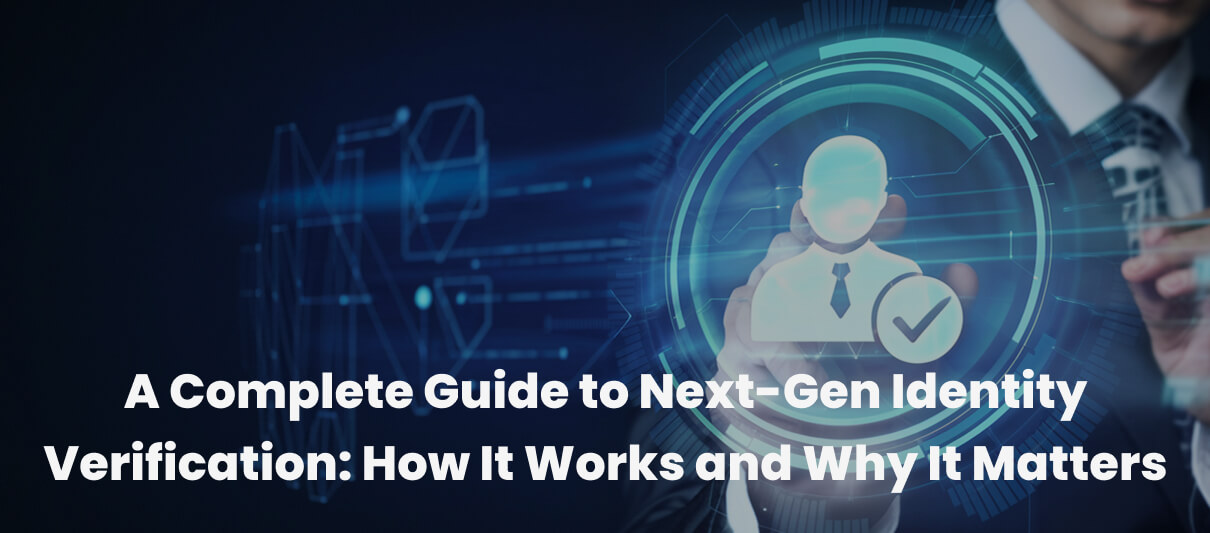Master Data Governance - Definition and Guide for Businesses and Individuals
From supporting informed decision-making to streamlining operational efficiencies, a lot has been said and discussed about the significance of data for modern businesses. But do you think all data endorses this kind of operational excellence? Well, that’s where the real catch is. Only clean, accurate, and consistent master data can contribute to data-driven insights, ensuring businesses seize the opportunities that create a difference in their business processes. To achieve this, the master data management needs to undergo robust governance practices that define how data should be handled, managed, and protected. This way, organisations will be subjected to reliable and clean data, allowing every department of the business to work with high-quality data.
As an unsaid rule, every business, irrespective of its size, relies on data to make decisions, streamline operations, and enhance business performance. So, having a master data governance (MDG) system avoids the risk of costly errors, reputational damage, and regulatory violations. This blog on MDG will help you understand its significance, best practices, and key principles. Exploring the blog will ensure your business leverages data that is only accurate, consistent, and reliable.
Master Data Governance - An Overview
Master Data Governance can be defined as the combination of policies, processes, and standards that establishes the data management framework for organisations to manage and maintain the data quality and consistency of the master data. As this data houses all significant information about customers, products, sales, and other departments, this data is termed master data. Governing it in the right way helps businesses capitalise on the right decisions, thereby ensuring improved growth and profitability.
With the rise of AI, the need for more accurate data is exponentially increasing, challenging businesses to have qualified data that supports the AI with optimal information to function in a manner similar to human operations. From healthcare to financial solutions, the role of sensitive data has increased drastically. This challenges organisations to have a clear and straightforward governance structure that ensures the data is managed accurately, clearly, and reliably, which is in alignment with both the business goals and regulatory requirements.
With MDG in place, organisations can achieve the following:
Accountability: By assigning key responsibilities and roles, the MDG ensures that every authorised individual is accountable for the data quality, reliability, and completeness of the data. This way, the data remains a single source of information for every department.
Data Quality: Setting up data standards ensures data is collected, formatted, and validated consistently, thereby assisting businesses with consistent data quality that is reliable and accurate to proceed.
Consistency Across Systems: Standardising the data entry and maintenance process across various departments helps organisations eliminate duplicate, fragmented, and siloed data from the system, thereby ensuring only authorised and consistent information is prevalent across the system.
Key Principles of Data Governance
The following are the primary principles that set the base for data governance.

Data Ownership & Stewardship
Defining and assigning roles and responsibilities for data management and governance plays a significant role in ensuring the effective implementation of policies and processes. The responsibilities are split into two categories, namely data ownership and data stewardship, where the respective group is made accountable for each aspect of the data. This way, businesses can ensure the master data is managed and maintained accurately.
- Data owners are usually stakeholders and key managers who control data domains such as sales, finance, and other sensitive information. Thus, they are tasked with setting data policies, rules, and standards that align with the organisation’s goals and compliance. This way, stakeholders will have the final say on activities related to data access or addressing disputes over data use.
- On the other hand, data stewards function along with data owners, where they take care of the day-to-day data quality management and standards. As quality gatekeepers, data stewards ensure the data validation, deduplication, and cleansing processes are managed and maintained in real-time, leaving no gap in data updating. This way, businesses can ensure the data provided to data owners is of high quality and reliable for making decisions.
Data Standards & Policies
Having a rulebook that has all policies and standards in place helps organisations effectively manage data across various systems and departments. These rules and standards guide businesses in setting the data collection process, formatting options, and storing choices, through which businesses can ensure the data across the system is accessible and usable for users. For example, incorporating the validation rule helps data of customer IDs, dates, and addresses have the same format for all departments.
Data Quality Management
Maintaining data quality management is challenging for businesses, which are bombarded with large volumes of data daily. Implementing core master data management practices helps achieve consistent and reliable data, which businesses can leverage to streamline their operations and enhance their organisational objectives.
- With data validation, businesses can verify whether the data entered is aligned with predefined criteria and standards, such as field validation, range checks, and consistency checks. This allows the business to be aware of costly errors, duplicates, and inconsistent data.
- By cleaning and scrubbing data, organisations can identify and correct duplicate and redundant data that negatively impacts business performance, such as analysis, marketing, and financial decisions.
- Tracking data over time is essential to maintaining high standards of data quality and integrity. It ensures the relevant data is updated and allows organisations to monitor key performance metrics such as error rates and completeness.
Data Security & Privacy
Building a security framework in MDG will help safeguard sensitive data from unauthorised access and potential data breaches. However, it also supports organisations in ensuring their data practices are well-aligned with the latest regulations, such as the General Data Protection Regulation (GDPR) and the California Consumer Privacy Act (CCPA). This way, businesses can be assured that their data is not just protected but also compliant with local and global data protection
- Implementing data access controls such as role-based limits the ability of users to view, edit, or share sensitive information apart from the assigned user. Thus, the information is made accessible only to a selected group of users.
- Encrypting sensitive data by converting it into unreadable code, both at rest and in transit, assures businesses the data cannot be read or breached unless the decryption key is made available. This security measure is particularly critical in situations where data needs to be transmitted over networks or in cloud environments.
- Masking data is another form of data protection. In this form, the information is secured by anonymising the details with fictional values without compromising the data quality management and completeness. Thus, masking data facilitates a more secure and protected environment for businesses handling sensitive data on a daily basis.
Overall, the key principles work together to ensure the data is secure, accurate, and consistent across departments and various systems.
Step-by-Step Guide to Streamlining Master Data Governance
Now that we have understood the significance and necessity of MDGs for data quality management, implementing them is the next step businesses should opt for.
1. Identify Key Data Domains
As a first step, it is important to identify the data domains that are very critical and sensitive for the organisation. This way, businesses can draft data management frameworks and establish policies that align with the particular dataset, resulting in a more refined governance approach. The key data domains included
Customer data: Contains all important details about customers, including their details, buying patterns, and interactions.
Product data: Includes details about the product or service specification, pricing, and stock-keeping unit (SKU).
Employee data: Houses all information about employees, including their personal details, addresses, and contact numbers.
Vendor data: This includes data related to suppliers and partnerships, such as contracts, performance metrics, and bills of quantities.
2. Define Policies & Standards
Once the data domains are identified, businesses are set to establish standards and policies. These will serve as a data management framework for businesses to spell out how data needs to be collected, formatted, and processed within the organisation. This supports businesses in preventing errors, redundancies, and inconsistencies and adhering to local and international rules and regulations.
3. Assign Roles & Responsibilities
As a next step, it is essential to define roles and responsibilities for data ownership, as this contributes to managing the data quality and its completeness. By fostering cross-functional collaboration, organisations ensure that data governance efforts are cohesive and well-integrated across all operational areas.
4. Leverage Technology & Tools
To achieve effective and seamless master data governance, advanced tools and technologies are necessary. This will support a streamlined approach where data is securely transmitted from one device to another without any breach or data loss. Having the right tool assists businesses in making informed decisions based on data that is cohesive and consistent.
5. Establish Continuous Monitoring
As a final step, it is crucial to have a continuous monitoring plan, where organisations implement long-term efforts to ensure the data related to their business remains consistent, reliable, and complete. As business environments are challenging, the need for continuous monitoring is an unsaid rule that monitors and tracks the quality and performance of crucial data.
Thus, following these steps ensures that the master data governance is effective and streamlined, enabling businesses to achieve the desired results.
Why Master Data Governance Matters?
Before concluding, let’s examine why master data governance matters for businesses, regardless of their size or nature of work.
Informed Decision-Making
This is the first and foremost reason why businesses should opt for master data governance. Not every piece of data can support decision-making processes. Only accurate and reliable ones can, and to achieve that, businesses need a robust data governance strategy that ensures the data stored is accurate, consistent, and reliable to make decisions that support business at all levels.
Improve Operational Efficiency
With standardised and accessible data, organisations ensure smooth operational efficiency is carried out, where data is complete, error-free, and relevant in real-time.
Adherence to Compliance Measures
A streamlined master data governance practice allows organisations to strictly adhere to regulatory requirements regarding data protection and local and global compliance, reducing legal liabilities and penalties.
Better Competitive Advantage:
Having access to usable and reliable data empowers businesses to make decisions that support product or service enhancement, understanding customer behaviour, and improving marketing strategy. This way, businesses can achieve strategic growth that is way ahead of their competitors.
Conclusion
To conclude, high-quality data is essential, as every business relies on it to make decisions that drive performance and efficiency. Implementing master data governance ensures that this data is accurate and dependable, laying a strong foundation for strategic decisions and improved outcomes.
With well-structured MDG practices supported by professional expertise like SquareOne, organisations can achieve accessible, trustworthy data that enhances decision-making, operational efficiency, and competitive advantage. Many businesses find MDG implementation challenging, but partnering with experienced professionals can offer guidance tailored to their unique needs, ensuring a phased and streamlined approach. As data continues to shape the future of business, an effective MDG strategy becomes indispensable for sustainable growth and innovation. Transform your data into a strategic asset—partner with SquareOne for a seamless MDG journey.















